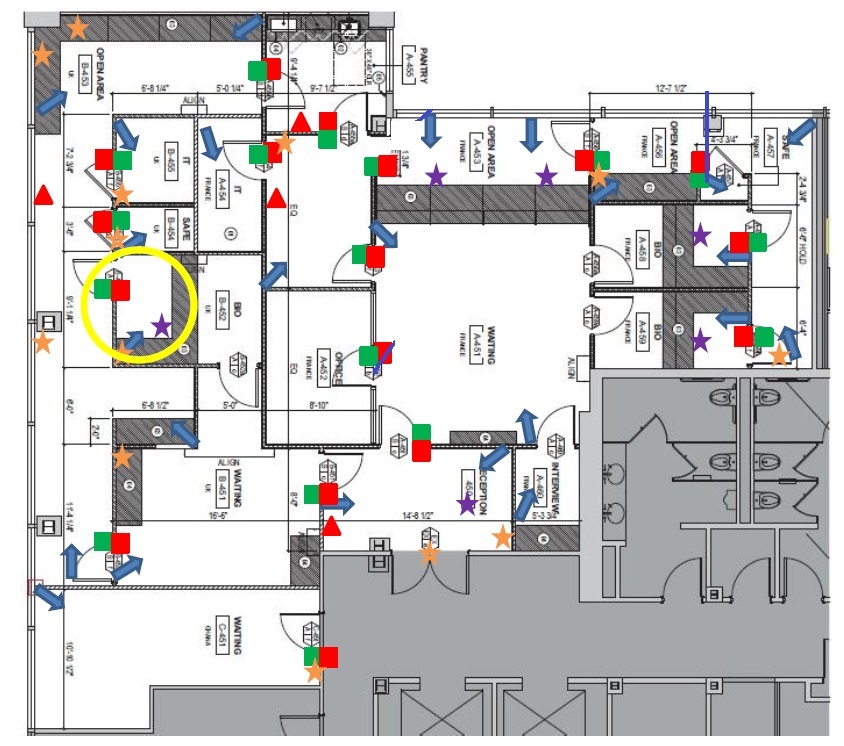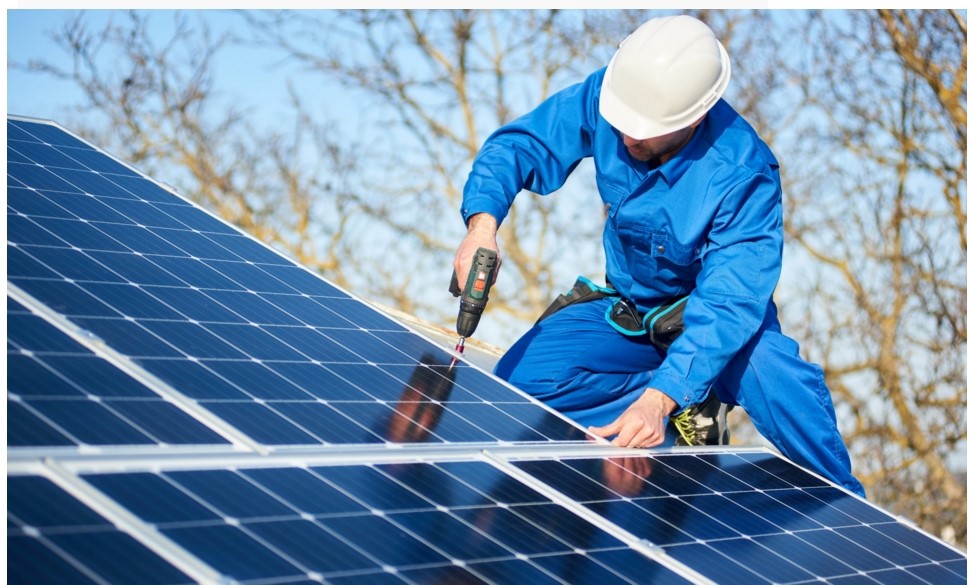
STAR General Contractor
DESIGN + BUILD PRE CONTRUCTION CONSULTING TENANT IMPROVEMENT GENERAL CONTRACTING
ARCHITECTURE + ENGINEERING + CONSTRUCTION + CONTRACTING ADU | ELECTRICAL | SOLAR |
|
EV Charging Stations Installs Contact us info@SterGeneralContractor.com general engineering contractor What is BEV, FHEV, PHEV, MHEV, FCEV? Here’s your guide to types of electric vehicles When it comes to types of electric vehicles (EVs), the choices people can buy go far beyond those powered by batteries alone. These days, they can find all types, including options that rely on fuel cells or combine a gas engine in hybrid and plug-in hybrids. Generally speaking, there are several main types of electric cars we’ll talk about in this article: The standard EV, also known as a battery-powered electric vehicle (BEV); the hybrid electric vehicle (HEV); and the plug-in hybrid electric vehicle (PHEV). There are subsets of each type as well. With all these acronyms, let’s break it down. Battery Electric Vehicle BEV BATTERY ELECTRIC VEHICLE BEVs stand out from most cars on the market in that they don’t have internal combustion engines. Instead of gasoline, these vehicles run solely on battery power. Drivers can charge them at home using Level 1 or Level 2 EV chargers or use more powerful chargers (Level 3) designed for commercial charging stations.Because EVs run on battery power without an internal combustion engine’s assistance, they can run much farther on a single charge than hybrid vehicles. They’re also known as battery electric vehicles, or BEVs. That’s what distinguishes them from hybrids that run on battery power with assistance from internal combustion engines. Battery = B Electric = E Vehicle = V Battery Electric Vehicle = BEV Full Hybrid Electric Vehicle FHEV FULL HYBRID ELECTRIC VEHICLE FHEVs run on both an internal combustion engine and an electric motor that uses energy stored in a battery. Unlike most electric vehicles, however, HEV drivers charge their batteries via regenerative braking. Regenerative braking stores the kinetic energy used to stop the car to charge its battery and help the internal combustion engine accelerate the vehicle. The micro hybrid, uses both a battery and electric motor to make the car run. Although they can’t run solely on electric power, they maximize fuel economy by shutting off the internal combustion engine during complete stops. The full hybrid has the battery power to make the car move using electricity alone, but usually only for short distances. Full = F Hybrid = H Electric = E Vehicle = V Full Hybrid Electric Vehicle = FHEV Plug-in Hybrid Electric Vehicle PHEV PLUG-IN HYBRID ELECTRIC VEHICLE PHEVs expand on the concept of the standard hybrid vehicle. They have both an internal combustion engine and a battery-powered electric motor. This allows the battery to store enough power to feed the electric motor and in turn decrease your gas usage by as much as 60 percent. This can save you time and money at the gas pump. PHEVs can travel up to 40 miles on electric power alone, rather than a couple of miles with a standard hybrid vehicle. The two types of PHEVs: 1. Extended range electric vehicles (EREVs), or series plug-in hybrids, use an electric motor to push the car while the internal combustion engine generates electricity. Once the battery taps out, the electricity stored by the engine takes over to power the vehicle. 2. On the other hand, parallel (or blended) PHEVs use their internal combustion engines and electric motors to move the car. Plug-in = P Hybrid = H Electric = E Vehicle = V Plug-in Hybrid Electric Vehicle = PHEV Mild Hybrid Electric Vehicle MHEV MILD HYBRID ELECTRIC VEHICLE MHEVs improve gas mileage by using a modest 48V battery and electric motor to increase the efficiency of their internal combustion engine (ICE). Unlike a hybrid electric vehicle, an MHEV does not run solely on electric power, although the ICE can be shut off during braking, coasting and stopping. In addition, even when the ICE is switched off, the electric motor can power nonessential features such as air conditioning or seat heaters. Mild = M Hybrid = H Electric = E Vehicle = V Mild Hybrid Electric Vehicle = MHEV Fuel Cell Electric Vehicle FCEV FUEL CELL ELECTRIC VEHICLE The new kid on the block, FCEVs relies solely on an electric motor, but unlike the BEV, electricity is generated from hydrogen fuel cells rather than batteries. Hydrogen fuel cells generate electricity by combining hydrogen with oxygen. Like the BEV, the FCEV is 100% emission-free locally. Fuel Cell Electric Vehicles run on compressed liquid hydrogen. When hydrogen is combined with air inside the fuel cell stack, the reaction powers an installed electric motor to drive the wheels. Similar to a BEV they are quiet, produce no emissions but the tank can be refilled in a few mere minutes. Fuel = F Cell = C Electric = E Vehicle = V Fuel Cell Electric Vehicle = FCEV Extended Range Electric Vehicle EREV EXTENDED RANGE ELECTRIC VEHICLE An Extended Range Electric Vehicle (EREV) has an auxiliary power unit (called a range extender) which increases the EREV’s driving range. Most range extenders are small internal combustion engines that drive an electric generator furnishing the electric batteries and motor with electricity. An EREV will create CO2 when its small range extender motor is operating, but not when the EREV is using its electric power. Over its lifetime, an EREV will create significantly less CO2 than an ICE car. Current EV models are using new features that extend the driving range further than before. The industry is taking multiple approaches to extend the EV range. For an extended-range electric vehicle (E-REV), an auxiliary power unit (APU) is often used as a companion to charge the battery pack. Extended = E Range = R Electric = E Vehicle = V Extende Range Electric Vehicle = EREV Internal Combustion Engine ICE INTERNAL COMBUSTION ENGINE Even petrol, diesel, methane and LPG cars have their own abbreviation: ICE, or Internal Combustion Engine. The acronym indicates all cars with an internal combustion engine, or endothermic one. ICE is a heat engine where the combustion of fuel occurs with an oxidizer (usually air) in a combustion chamber. The expansion of high-temperature and high-pressure gases produced by the mini explosion applies direct force to turbine blades, rotors, or as in the case with almost all cars, to pistons. The rotating pistons drive the car’s crankshaft, which turns the wheels. providing motion. When gas (or diesel fuel) is burned, the combusted material remaining is toxic gas, which pollutes the environment. Internal = I Combustion = C Engine= E Internal Combustion Engine = ICE How EVs help the environment An electric car is a vehicle that is fully or partially propelled by electric motors, using energy stored in rechargeable batteries. The first practical electric cars were produced in the 1880s. Electric cars were popular in the late 19th century and early 20th century. Innovation and advanced development in internal combustion engines (ICE) and mass production of cheaper gasoline vehicles has led to a decline in the use of electric vehicles EVs help to reduce greenhouse emissions, air pollution and traffic noise. While the fully-electric models don’t emit greenhouse gases, EVs aren’t completely emission-free, especially if you charge your EV using traditional sources of electricity. They are still a much cleaner form of transport than cars which run on petrol and diesel. Electric Vehicle Architectures How the architecture changes? Several architectural differences are involved in moving from one of these types of EV to the next. The most obvious is battery capacity, which is measured in kilowatt hours (kWh). Since the electric motor in a MHEV is only assisting a gas engine, it might have a battery that is 1 kWh or less. An HEV’s battery has to deliver enough power to run the vehicle for brief periods, so it might be as large as 8 kWh, while a PHEV could have a battery as large as 15 kWh to drive farther on electric power only. The battery in a full BEV has to power everything in the vehicle, all the time, so typical BEV capacities range from about 40 kWh to 80 kWh, although some are now emerging with batteries as large as 200 kWh. The biggest architectural change comes when moving from HEV to PHEV. That is the point where outside power, from the grid, possibly from an outlet at the vehicle owner’s house, now enters the vehicle. Receiving alternating current (AC) power from the outlet means the vehicle has to have an inlet, leading to an onboard charger that converts the power to direct current (DC) to charge the battery. As the battery powers devices in the vehicle, the power stays DC but requires an inverter to change to AC to power the electric motors. Charger Types and Speeds EVs can be charged using electric vehicle service equipment (EVSE) operating at different charging speeds. Level 1 Level 1 equipment provides charging through a common residential 120-volt (120V) AC outlet. Level 1 chargers can take 40-50+ hours to charge a BEV to 80 percent from empty and 5-6 hours for a PHEV. Level 2 Level 2 equipment offers higher-rate AC charging through 240V (in residential applications) or 208V (in commercial applications) electrical service, and is common for home, workplace, and public charging. Level 2 chargers can charge a BEV to 80 percent from empty in 4-10 hours and a PHEV in 1-2 hours. Direct Current Fast Charging (DCFC) Direct current fast charging (DCFC) equipment offers rapid charging along heavy-traffic corridors at installed stations. DCFC equipment can charge a BEV to 80 percent in just 20 minutes to 1 hour. Most PHEVs currently on the market do not work with fast chargers. Level 2 and DCFC equipment has been deployed at various public locations including, for example, at grocery stores, theaters, or coffee shops. When selecting a charger type, consider its voltages, resulting charging and vehicle dwell times, and estimated up-front and ongoing costs. RESIDENTIAL / COMMERCIAL Professional Quality Architectural, Structural Civil Engineering Consult Solutions. Soil Report, Survey and Management Services! |
| DESIGN info@SterGeneralContractor.com |  |
| ENGINEERING Need more info? contact us now Proper Design Proper Planning Cost Calculations Permits QC |  |
| BUILD Direct and supervise workers and determine labor requirements. Oversee and ensure direct construction projects from conception to completion. Inspect and review projects to monitor compliance with building, safety codes, and other regulations. |  |

ADU { Design - Engineering - Build
COMMERCIAL { Office Improvement - Tenant Improvement
ELECTRICAL { EV charging Stations - Residential Commercial Lighting
GENERAL CONTRACT { Electrical - Low Voltage - Smart Homes
RESIDENTIAL { Design/Engineer - Build/Remodel - Kitchen - Bath - Deck - Outdoor
SOLAR { Solar Installation
STAR STYLE
Welcome, We are engineers, architectures and trade contractors ready to provide you with best construction experience. Thank you for your support - Star GC.
copyright StarGeneralContractor.com 1999-2025 |